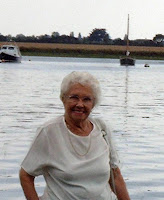By Len Hutton.
Planning on being a wedding photographer?
Plan the photographs you would like to take before the wedding day, talk the wedding photography plans over with the main parties involved in the wedding i.e. The Bride, Groom, Parents etc.
Before the ceremony.
Make sure you get to the wedding venue at least half an hour before the ceremony is due to start.
· Make a point of having a word with the Minister; ask if it is OK for you to take photographs during the ceremony. (Be warned most will say “No.”) That’s OK be polite and ask him where and when will be the best time to take the signing of the register and may be a couple of other shots, like leaving the church. i.e. Walking down the Aisle. (I have never met the minister that has not wanted to help me after that.)
· Now get back to the photography get photos of the Groom and Best Man arriving, Mum’s and Dad’s, the Brides Mum usually arrives with the Bridesmaids and the Brides Dad usually comes with the Bride, get the Bridesmaid’s arriving and take as many photographs as possible without keeping them hanging about, now you are using digital photography this will not be a problem as it will not be costing you any extra.
· Now the arrival of the Bride and Dad, take photos in the car, the Bride getting out of the car and the Bride and Dad standing by the car. Once again get as many shots as possible. But make sure you work fast, if they get fed-up at this early stage you’ve lost the battle before you start. Keep everyone sweet. SMILE. Tell the Bride how pretty she looks, or tell her what a lovely dress she has on or how nice her flowers look.
During the ceremony.
This may well be dominated by the perimeters that the minister allows you to work in. Many Priests/Ministers/Registrars etc will not allow you to take photographs during the ceremony, but, even if they do allow you to take photographs during the ceremony be discreet try not to use the flash, if you do have to use the flash avoid using it more than once or twice (no sooner than you use your flash, so too will many of the other guests and soon you will have started a light show that will not be appreciated by the minister!)
If possible try to get the main photographs. i.e. get Dad giving away the Bride, the exchanging of the rings, the blessing and the first kiss.
Make sure you get the signing of the register and walking down the Aisle after the ceremony, leaving the church.
After the ceremony.
At this point make sure that it is you who control of the show or else it will run out of control and you will never get it back. Get photos of the Bride and Groom coming out of the venue. Get the Bride and Grooms family, the Bridal groups variations of family groups and as many different poses of the Bride and Groom as possible also involving Bridesmaids, Pageboys, Aunts, Uncles etc. also try to get variations of brothers sisters and so on. Don’t forget to get the Bridesmaids on their own as solo portraits.
And finally the confetti photograph, avoid taking this photo too early on as this may upset the couples clothing as some friends try to put confetti down the couples back etc. and now a few photographs at the front of the car, maybe have one with the car door open, one getting into the car and one in the car.
At the reception
At the reception make sure you get your photographs before the Bride and Groom get too settled in, Try to get a mock photo of cutting the cake, and a few of the couple toasting each other. A good idea is to try to get Dad pouring out a glass of bubbly, and maybe the Best Man reading out a few cards with the Bride and Groom at the side of him looking at him maybe smiling or even laughing.
Finally
A few points to be sure you don’t forget.
Check your camera and flash before the wedding.
Keep an extra set of batteries handy on you all the time.
Keep checking your settings
Try to use a flash grip rather than a hot shoe flash on the camera.
Make the wedding FUN. You’ll enjoy it and so will everyone else.
Keep looking out for that WOW! shot.
Be polite.
In time you will develop your own style, but I find this a good template to work on.
One thing more
Always! Always make sure you get a wedding contract signed before you attempt to cover any weddings.
**************************************
If you are interested in photography or have any interesting stories or tips you would like to pass on, visit my web site. Or you can learn more about digital photography at;
http://digitalweddingphotographyinfo.blogspot.com/http://www.photographyebooks.co.uk/http:// www.lenhuttonphotos.com
**************************************


